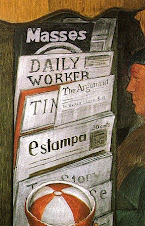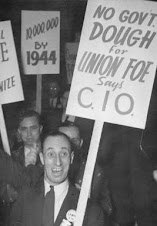
Dresden, Germany, 65 years after firebombing
Human blockade keeps neo-Nazi marchers out
By John Catalinotto
Published Feb 17, 2010 4:27 PM
Progressive residents of Germany won a victory as 12,000 people used their bodies and their organization to blockade a neo-Nazi march in Dresden, a major city in Saxony, located on the Elbe River in the southeast of the country near the Czech border. It was a welcome triumph not only over the fascists but over the German government which was prepared to defend the neo-Nazi marchers.
The fascists had chosen Feb. 13 for their march for a special reason. It was the 65th anniversary of when U.S. and British bombers had dropped so many incendiary bombs on the center of this German city that it created a firestorm, sucking out all the air and burning or suffocating between 35,000 and 70,000 German civilians.
The neo-Nazis wanted to take the legitimate grievance over this war crime and make it their issue. It’s to the credit of the German anti-fascists that they joined together — 600 organizations and 2,000 individuals supported the Dresden-based coalition — and came from all over the Federal Republic to physically stop the Nazis.
The success required both a countrywide mobilization and a political struggle against those who simply wanted to make a symbolic protest, that is, to protest the neo-Nazi march but not confront it. The anti-fascists succeeded in both areas. “It wasn’t easy,” said Lena Roth, spokesperson for the Dresden anti-fascist coalition. “We took casualties from Nazi attacks and it was icy cold, but it was worth it.” (German daily Junge Welt, Feb. 15)
A stream of Twitter messages that Workers World followed showed how the anti-fascists coordinated their actions to block the Nazi march into Dresden. A favorite signoff on the site was “Dresden Nazifrei, no pasaran,” meaning “No Nazis in Dresden, they shall not get in.”
Young workers played a major role in the anti-fascist blockade. Ringo Bischoff, federal youth secretary of the service workers union ver.di, stated: “The ver.di-youth is committed to an anti-fascist program and will also in the coming period remain active against Nazis and rightist ideologies in the factories and the union.” (Junge Welt, Feb. 15)
The role of the government, which mobilized thousands of police to protect the fascist marchers, boomeranged. Support for the counterdemonstration grew after people found out that the state in Saxony would allow a major fascist march to take place. As anti-fascist Joachim Guilliard from Heidelberg told Workers World, “There was one bus from here going to Dresden. But when people found out what the government was doing, the organizers had to hire two more buses.”
The chairperson of the Union of Victims of the Nazi Regime, Heinrich Fink, said, “The successful blockades have impressively shown that in the struggle against the old and new Nazis we can rely only on ourselves, and not at all on the state regime or the police or the courts.” (Junge Welt, Feb. 15)
Dresden: Feb. 13, 1945
Dresden is known for its art museum, the bridges across the Elbe and the brutal fire-bombing as World War II drew to a close. Germany’s neo-Nazi movement has no right to seize Dresden’s history as its issue. At the time, there was little protest of this brutal slaughter of civilians that was a common event in the war waged by imperialist forces — on both sides — and in which Germany’s Nazi-led military reveled.
Except that it was home to Germans, Dresden was the least likely military target. Its population had doubled as German civilians from the east ran before the advance of the Soviet Red Army. The British and U.S. military fire-bombed Dresden because it was a military experiment they could get away with. In addition, it was a show of force and ruthlessness to the Red Army, as later on, in an even more dramatic and inhuman way, were the nuclear bombing of Hiroshima and Nagasaki in Japan.
For readers who are unfamiliar with the firebombing of Dresden, perhaps the best way to learn of it is to read “Slaughterhouse Five,” the novel by Kurt Vonnegut, who himself was a prisoner of war, forced to work underground in Dresden when the bombing took place. A factual description might leave one numbed by numbers, while Vonnegut’s novel makes vivid the charred logs that were the remains of tens of thousands of civilians.
The imperialist politicians who ordered Dresden’s destruction are gone, but their successors in the Pentagon and the British military are now carrying out a slaughter of civilians with newer weapons in the mountains and valleys of Iraq and Afghanistan. What is the current offensive on Marjah, Afghanistan, but another war crime? Neither the Nazis nor the “democratic” imperialists should be allowed to get away with war crimes.
Articles copyright 1995-2010 Workers World. Verbatim copying and distribution of this entire article is permitted in any medium without royalty provided this notice is preserved.










































No comments:
Post a Comment